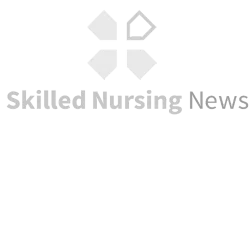PBJ research report and related news:

Staffing Patterns in US Nursing Homes During COVID-19 Outbreaks
Findings In this cohort study of 2967 nursing homes in 2020, owing to increased absences and departures, there were statistically significant declines in staffing levels during a severe COVID-19 outbreak that remained statistically significantly reduced 16 weeks after the outbreak’s start. Facilities temporarily increased hiring, contract staff, and overtime to bolster staffing during outbreaks, but these measures did not fully replace lost staff, particularly certified nursing assistants.
Shen, Karen, et al. “Staffing Patterns in US Nursing Homes During COVID-19 Outbreaks.” JAMA Health Forum, vol. 3, no. 7, 2022, p. e222151. Crossref, jamanetwork.com/journals/jama-health-forum/fullarticle/2794538.

Nursing Home Staffing Challenges Worse During COVID-19 Outbreaks
Nursing home staffing challenges increased during severe COVID-19 outbreaks, with staffing hours 5.5 percent below pre-outbreak levels by the 16th week of an outbreak.
Nursing homes experienced significant staffing challenges during and after severe COVID-19 outbreaks due to temporary absences and permanent departures from workers, according to a study published in JAMA Health Forum.
Researchers used data from the CMS Payroll Based Journal and the National Healthcare Safety Network (NHSN) COVID-19 Nursing Home Data set to determine whether severe COVID-19 outbreaks were associated with declines in staffing.
Baily, Victoria. “Nursing Home Staffing Challenges Worse During COVID-19 Outbreaks.” Revcycle Intelligence, 27 Jul. 2022, revcycleintelligence.com/news/nursing-home-staffing-challenges-worse-during-covid-19-outbreaks.

Why Minimum Standards Are Not the Best Way to Monitor Staffing During Covid Outbreaks
Staff-to-resident ratios in nursing homes were confirmed to be stable or higher than pre-pandemic levels during Covid outbreaks, as declining resident census outpaced reductions in staffing.
Such findings fly in the face of federal efforts to establish a minimum staffing ratio.
A JAMA Health Forum study published on Friday found that facility managers were more likely to report staffing shortages during severe outbreaks, suggesting a per-resident staffing measure may not be the best benchmark for really understanding staffing capacity during outbreaks.
Stulick, Amy. “Why Minimum Standards Are Not the Best Way to Monitor Staffing During Covid Outbreaks.” Skilled Nursing News, 24 July 2022, skillednursingnews.com/2022/07/why-minimum-standards-are-not-the-best-way-to-monitor-staffing-during-covid-outbreaks.

Emergencies help needed: More ‘strike’ teams, policy improvements vital for nursing homes, report says
Despite diligent efforts by nursing homes during COVID-19 outbreaks, operators need help from policy makers to ensure better levels of care during future infection control emergencies, researchers say.
Staffing levels may actually appear higher than normal during COVID outbreaks, but that belies increasingly intense staff-time needs, as well as the fact that worker levels generally do not recover after an outbreak, a veteran academic team of nursing home researchers found.
As a result, policy makers should consider steps such as creating centralized ‘strike’ teams to supply temporary staffing assistance, as some states did, and other measures to help lift providers when a crisis hits.
Berklan, James. “Emergencies Help Needed: More ‘Strike’ Teams, Policy Improvements Vital for Nursing Homes, Report Says.” McKnight’s Long-Term Care News, 25 July 2022, www.mcknights.com/news/more-strike-teams-policy-improvements-vital-for-nursing-homes-report-says.

Provider, policy action can stabilize staffing levels during infectious disease outbreaks, researchers write
Provider and policy action is needed to counter the effects of staff absences and departures, particularly during infectious disease outbreaks such as COVID-19, that may put nursing home residents at risk, according to the authors of a study published Friday in the journal JAMA Health Forum.
“Considerable staffing challenges suggest a potential need for policy action to ensure adequate staffing levels during nursing home outbreaks to protect resident health,” wrote authors Karen Shen, PhD; Brian E. McGarry, PT, PhD; David C. Grabowski, PhD; et al.
The researchers studied 2,967 nursing homes in 2020 and found that statistically significant declines in staffing levels occurred during severe COVID-19 outbreaks that didn’t resolve, on average, for 16 weeks after an outbreak’s start.
Gaivin, Kathleen Steele. “Provider, Policy Action Can Stabilize Staffing Levels during Infectious Disease Outbreaks, Researchers Write.” McKnight’s Senior Living, 25 July 2022, www.mcknightsseniorliving.com/home/news/business-daily-news/provider-policy-action-can-stabilize-staffing-levels-during-infectious-disease-outbreaks-researchers-write.

'Permanent shock' to nursing homes? Facilities fail to replace workers who quit after COVID outbreaks
Most nursing homes lost more than half their nurses and aides last year, which could complicate President Joe Biden’s push to increase staffing.
Nursing home staffs shrunk in the weeks and months after severe COVID-19 outbreaks, according to a new study, and federal data shows most facilities lost more than half their nurses and aides in the past year.
The study found facilities have struggled to refill openings, particularly among certified nursing assistants, who provide most bedside care – findings that both complicate and underscore the need for President Joe Biden’s push to establish nationwide staffing-level requirements.
Fraser, Jayme Usa Today. “‘Permanent Shock’ to Nursing Homes? Facilities Fail to Replace Workers Who Quit after COVID Outbreaks.” USA TODAY, 4 Aug. 2022, eu.usatoday.com/story/news/investigations/2022/08/04/nursing-home-jobs-workers-quit-pay-covid-outbreaks/10219487002.


